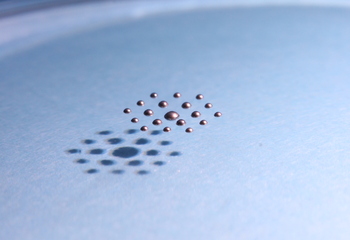Guest lectures and seminars - Page 14
Cavitation is a ubiquitous and sometimes destructive, phenomenon. For instance, cavitation bubbles may interrupt water flow in plants or severely damage the surfaces of machines such as pumps and propellers. The so-called tribonucleation of vapor bubbles has been proposed to be responsible for the cracking sound produced by the manipulation of human synovial joints. To study cavitation up close we have developed an experimental setup where a sphere in water abruptly leaves a flat surface starting from a separation of only 10 nm.
Upon upward movement of the spherical surface, a cavitation bubble forms and develops branched fingers through the Saffmann-Taylor instability. Simultaneously, negative liquid pressures in the range of ∼10atm are observed. These large tension values occasionally lead to secondary nucleation events. The bubble sizes satisfy a predicted Familiy-Vicsek scaling law where the bubble area is proportional to the inverse bubble lifetime. The fact that creeping flow cavitation bubbles are more short lived the larger they are separate them from bubbles that are governed by inertial dynamics.
QOMBINE seminar by Satvik Singh (University of Cambridge): The PPT2 conjecture for diagonal unitary covariant map
Self-assembly is the spontaneous generation of order in systems driven by thermal agitation and interactions. At the molecular level, self-assembly plays an important role in the formation of giant com- plex macromolecules, being quite relevant for living systems. At the mesoscopic level, capillary driven self-assembly has been proposed for building structures in the gap between classical bottom-up and top-down fabrication methods, i.e. at the scales in between 10 micrometers and 1 millimeter. Although the method was proposed 20 years ago, only regular or simple structures were achieved so far. Using both experimental and statistical physics ideas, we demonstrate how to exploit subtle capillary interactions to create elaborate complex structures, as well as functional micromachines. On top of that, we show how such mescoscopic systems can be the analogues of many different physical systems such as folding molecules, molecular locks and keys, and crystal formation.
C*-algebra seminar talk by Suvrajit Bhattacharjee (University of Oslo)


